Bornholm is a Danish island in the Baltic Sea, known for being the sunniest place in the country – which is why it’s one of the most popular holiday destinations within the country! It’s actually closer to Sweden than Denmark, which explains the local dialect which is a mixture of Swedish and Danish (and which neither Swedes or Danes understand). It also explains the unique geology, which is very different from the rest of Denmark.
Most tourists visiting Denmark tend to stay in Copenhagen, which is a real shame as Denmark has so much more to offer. Copenhagen is nice, but to get a real feel of the country, travelling to the countryside or small islands is a must. Bornholm is perfect as a getaway from Copenhagen with its dramatic rock formations, beautiful beaches, mysterious forests, colourful seaside villages, idyllic countryside and medieval fortresses and round churches. There’s something for everyone on Bornholm!
I’ve been to Bornholm twice – first time on a class trip in the 6th grade and second time in the summer of 2017, where I excavated at Vasagård. On the 2017 trip, I was there for three weeks and spent the evenings and weekends exploring the entire island! Below is a list of my 18 favourite places on Bornholm for you to enjoy on your trip!https://www.google.com/maps/d/embed?mid=1qexWPToQ4If9D18vb5hs2z6MOV0z11zg
1. Klintebakken and the fossilised seabed
Klintebakken is one of the geologically most interesting areas on Bornholm, because it lies on the border zone between the Northern Scandinavian bedrock area, consisting mainly of granite and gneiss, and the Central European lowering area, where the bedrock is covered by thick layers of sandstone, clay and limestone. Here, you will find 1,700 million year old gneiss and 500 million year old sandstone.
The area is hilly and steep, with the peak of the terrain consisting of gneiss formations with dwarf bushes and various types of trees, as well as many large rocks that were moved to the area via the glaciers during the ice ages.
To the south of Klintebakken, next to a sandstone quarry, is a 540 million year old fossilised seabed. The seabed contains rare traces of waves and jellyfish, which can only be seen in a few other places in the world!


2. The Echo Valley
Ekkodalen (The Echo Valley) is one of the most naturally beautiful places on Bornholm. It’s a long rift valley that stretches 12 km through the largest forest on the island, Almindingen. A must-do here is to shout something so you can hear the echo – I swear it works!
There are several hiking trails that go through the valley and further into the forest.

3. Rytterknægten (viewpoint)
Rytterknægten is the highest point on Bornholm at 162 metres above sea level. It’s a royal memorial tower, which was built in 1856 for the visit of Frederik VII of Denmark. It’s located in the middle of Almindingen and offers an incredible view of the entire island and – on clear days – to Sweden!
Entrance is free of charge.


4. The Hills of Paradise
Three kilometres from the village of Nexø lies one of the most beautiful nature areas on Bornholm, Paradisbakkerne (the Hills of Paradise), which is part of Almindingen. The area consists of hilly landscapes with rift valleys, vertical cliffs, lakes and marshes, making it a popular hiking and mountain biking destination for both locals and tourists.
In the area, you’ll find Gamleborg, a Roman Iron Age fortress from circa 400-800 AD. Another worthwhile place to visit is Midterpilt, the highest hill in the area at 113 meters. It’s a short 200 meter walk along a forest path to get there.

5. The Rocking Stone
A sight in Paradisbakkerne that deserves its own recognition is Rokkestenen (the Rocking Stone), a 35 ton heavy rock that was brought to the area during the last ice age. Back in the days, the rock was easy to rock, but today it takes a lot of effort to move it just a bit, although it’s still possible (or so I’ve heard). Try to see if you can rock it!
Bornholm actually has about 800 rocking stones, but this one is the largest and most famous.
There’s a parking lot located 1 km from the rocking stone, and you can either walk or bike the rest of the way.

6. The round churches
Four of Denmark’s seven preserved round churches from the Medieval period are located on Bornholm – and in my opinion, all four of them are worth a visit!
Olsker is the tallest of the round churches at 13 meters, Nylars is the best preserved, Nyker is the smallest and youngest, and Østerlars is the largest and oldest. If you have to choose only one, Østerlars should be it! There are some amazing biblical frescos inside, plus loads of info boards that will tell you about the history of the round churches.
Entrance price for Østerlars: From April to October it costs 20 DKK for adults, 10 DKK for 10-18-year-olds, and children under 10 are free. From November-March entrance is free.
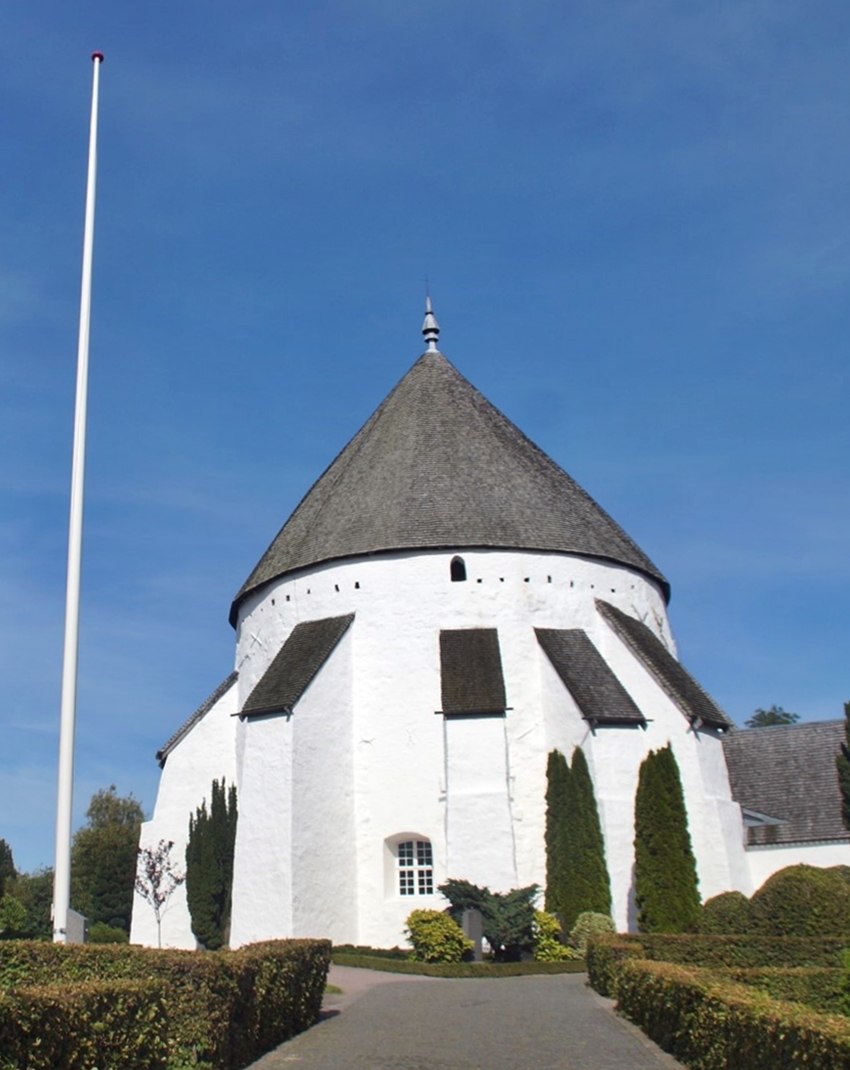


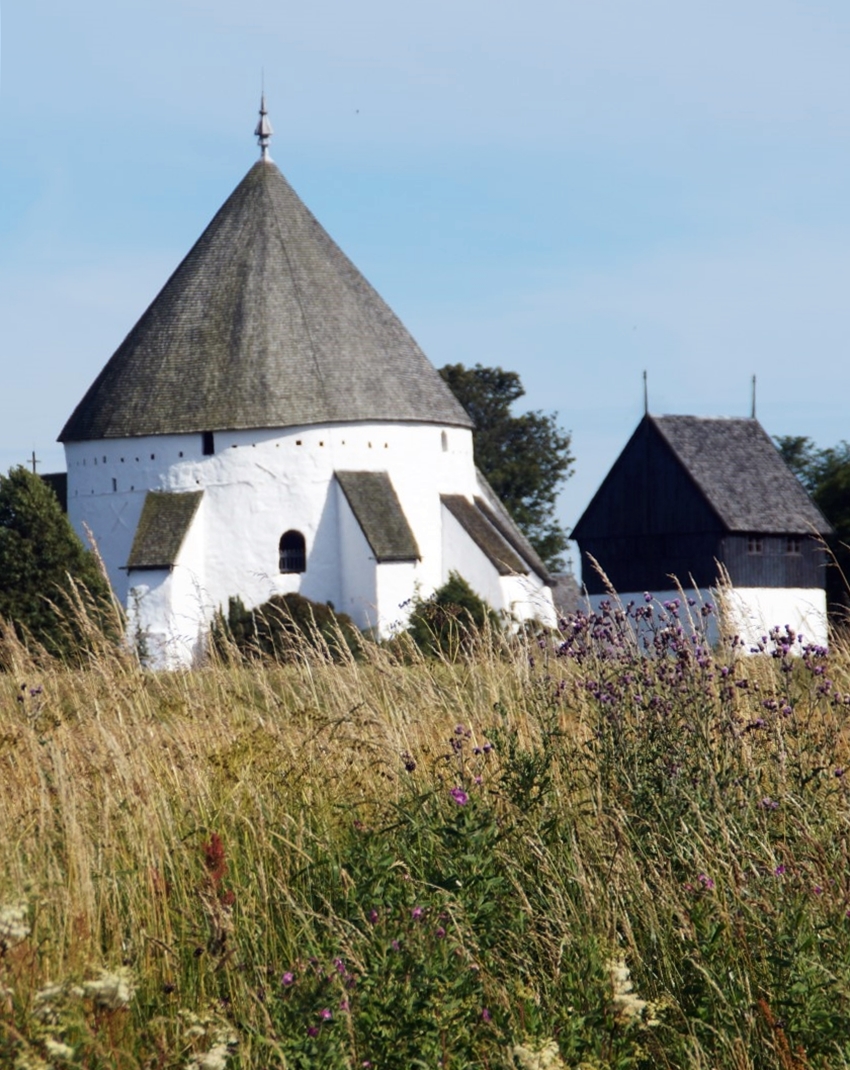
7. Hammershus Castle
The most famous sight on Bornholm is Hammershus, the largest medieval fortification in Scandinavia. The fortress was built in the 13th century and is believed to have been the private residence for the archbishop of Lund or the royal residence of King Valdemar II of Denmark, as new evidence has suggested.
The fortress consists of the base castle; the Mantel Tower, where King Christian IV of Denmark’s daughter Leonora Christine and her husband Count Corfitz Ulfeldt were imprisoned in the 17th century; and a great 759 m long stonewall that stretches around the fortress grounds.
Hammershus is situated 74 metres above sea level on Hammeren, the northernmost tip of Bornholm, and offers amazing views over the Baltic Sea and the south of Sweden in the horizon.

8. The Opal Lake
Opalsøen (The Opal Lake) is an opal blue artificial lake, created by stone quarrying in the late 19th century. The lake is among the oldest quarries on Bornholm, but the work there stopped in 1971, after which the enormous hole was abandoned and was slowly filled with water.
You can take the cableway from the top of the cliffs surrounding the lake, at 50 metres above sea level, and down into the lake! Although scary at first, it’s a really fun ride. Even if you don’t feel like a wet adventure, it’s still recommendable to hike to the top of the cliffs where the view of Opalsøen, Hammershus and surrounding lakes is amazing.
You can read more about the cableway here.

9. Madsebakke Rock Carvings
Madsebakke Rock Carvings is a definite highlight on Bornholm for anyone with archaeological interests!
These Bronze Age rock carvings come in many different forms, such as ships, suns and footprints, and Madsebakke has the largest complex in all of Denmark, located on a rocky hillside with a view of the village of Allinge-Sandvig and the Baltic Sea.
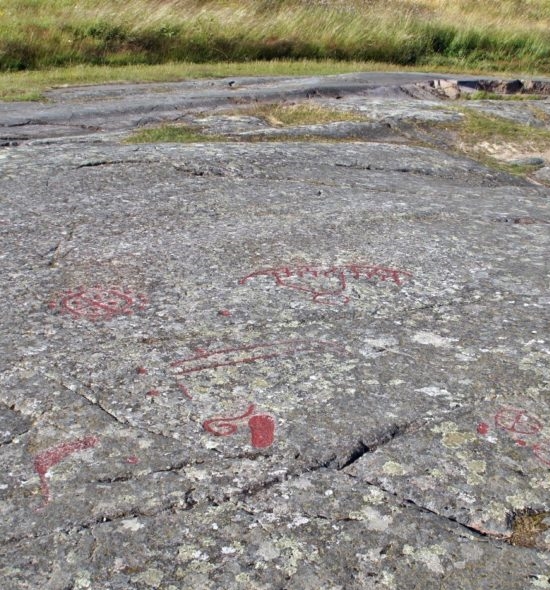

10. John’s Chapel
Jons Kapel (John’s Chapel) is a rock bluff located on the rocky west coast of Bornholm. These incredible cliff formations are the result of waves beating against the rocks at a time with much higher sea levels than today.
The cliffs were named after Jon, a hermit, who resided in a cave on the cliff, according to the legend. Jon was sent to Bornholm to bring Christianity to the local islanders. Many islanders were curious and visited Jon in his cave, until there was no longer enough space, so Jon crawled up on a cliff (“The Pulpit”), from where everyone could see and hear him preach.
There’s a parking lot near the cliffs, from where you’ll have to walk along a path for about 1 km and down some steps to get there.

11. Rønne
Rønne is the largest village on Bornholm with a population of 13,700, which is approximately 35 % of the entire population on the island. The village, which is the administrative center of Bornholm, is strategically located on the westernmost point of the island.
The old part of town is very charming with cobbled streets and flowers growing in front of half-timbered houses. There’s a lot to do and see in Rønne, such as the Museum of Armed Forces, the round-shaped citadel of Kastellet from 1687, the quaint harbour with its two lighthouses, the beautiful St. Nicolas’ Church from 1350, the Museum of Bornholm, the 19th century house Erichsens Gård and the cozy Nørrekaas Harbour.
12. Gudhjem
Gudhjem is a small village on the northeastern coast of Bornholm, famous for its red roofs, quaint streets and local boutiques. Gudhjem was founded in the 14th century, and is the oldest village on the island. It has a population of only 720 people, but that number is almost doubled during the summer months, where the town is a true tourist magnet.
Gudhjem is nestled beneath the “mountain” Bokul, which towers above the village at 48 metres above sea level, and thus Gudhjem is the only so-called “mountain village” in Denmark.
I recommend hiking to the top of Bokul, where the view of Gudhjem is amazing, visiting Gudhjem Plantage with the beautiful Gråmyr water lily pond, shopping in the small boutiques and enjoying a meal or snack by the colourful harbour.

13. The Sanctuary Cliffs
From the harbour in Gudhjem, you can catch a tiny boat that sails along the rocky coastline to Helligdomsklipperne (The Sanctuary Cliffs) for about an hour. The boat only leaves a few times each day, so be sure to check up on departure times.
Helligdomsklipperne are a group of sharp granite coastal cliffs at up to 22 metres high. The origins of the rocks go back 1700 million years, when they were formed by striped gneiss. 10,000 years ago, the rocks were completely submerged due to the rising sea levels since the last ice age, so the varying depths in the cliffs are a result of water erosion, such as Den Sorte Gryde (The Blact Pot), a cave that reaches far into the cliffs.
The name of the rocks originates from the Medieval period, when there was a holy spring located close to the cliffs, which attracted pilgrims. The holy water from the spring was brought up to a chapel that once stood on the field above the cliffs, and the sick would then drink the holy water in the hopes of being cured.


14. Ertholmene
Ertholmene is a small archipelago located in the easternmost corner of Denmark, 19 kilometres off the coast of Bornholm. The archipelago consists of three big islands, Christiansø, Frederiksø and Græsholmen, plus numerous skerries and rocks. Only Christiansø and Frederiksø are inhabited, and Græsholmen is a bird reserve.
Ertholmene has been used as temporary shelter for fishermen since the Medieval period. In the 17th century, the first permanent settlement emerged as a result of conflicts between Denmark and Sweden. Denmark needed a naval base in the Baltic Sea, and thus a fort was built on Christiansø and Frederiksø by King Christian the 5th in 1684 due to their brilliant strategic positions. In 1808, the islands were bombed by the English navy, and in 1855, the fortress lost its military importance and was abolished.
The external appearance of the islands hasn’t changed much over the years. Many of the historical buildings are now the homes of the locals with around 80 permanent residents. The islands are still fortresses girdled by thick granite walls with old cannons pointing towards the open ocean.
To get there, catch a ferry from Gudhjem to Christiansø. See the timetable here. Frederiksø is connected by a small pedestrian bridge. The islands are tiny, so you don’t need many hours to see it all, but on a sunny day it’s a perfect place to relax, especially since the islands are a car-free zone!

15. Bornholm Medieval Center
Bornholms Middelaldercenter (Bornholm Medieval Center) is an open air museum, which offers impressions of the daily life in the countryside from around 1350-1450, and includes reconstructions of Medieval cottages, a watermill, a forge, an archery range and a fortress.
You’ll see people in medieval dress and be able to experience craftsmen at work. There are also plenty of activities to take part in, such as archery, traditional knitting and cooking.

16. Dueodde Beach
Dueodde Beach is the most beautiful beach on all of Bornholm (and arguably in all of Denmark)! The sand is very fine, the water crystal clear and there are incredibly beautiful sand dunes.
I recommend going to the top of Dueodde Lighthouse for an incredible view of the beach and the dunes at 48 meters above sea level. It costs only 10 DKK.


17. The Balka Heathland
Balkalyngen (The Balka Heathland) is Denmark’s only sandstone heathland. It’s a wonderful place to go for a walk or a bike ride, to see if you can spot some wildlife!
Nearby is Balka Beach, a very popular beach which is almost as beautiful as Duodde – and definitely also worth a visit.
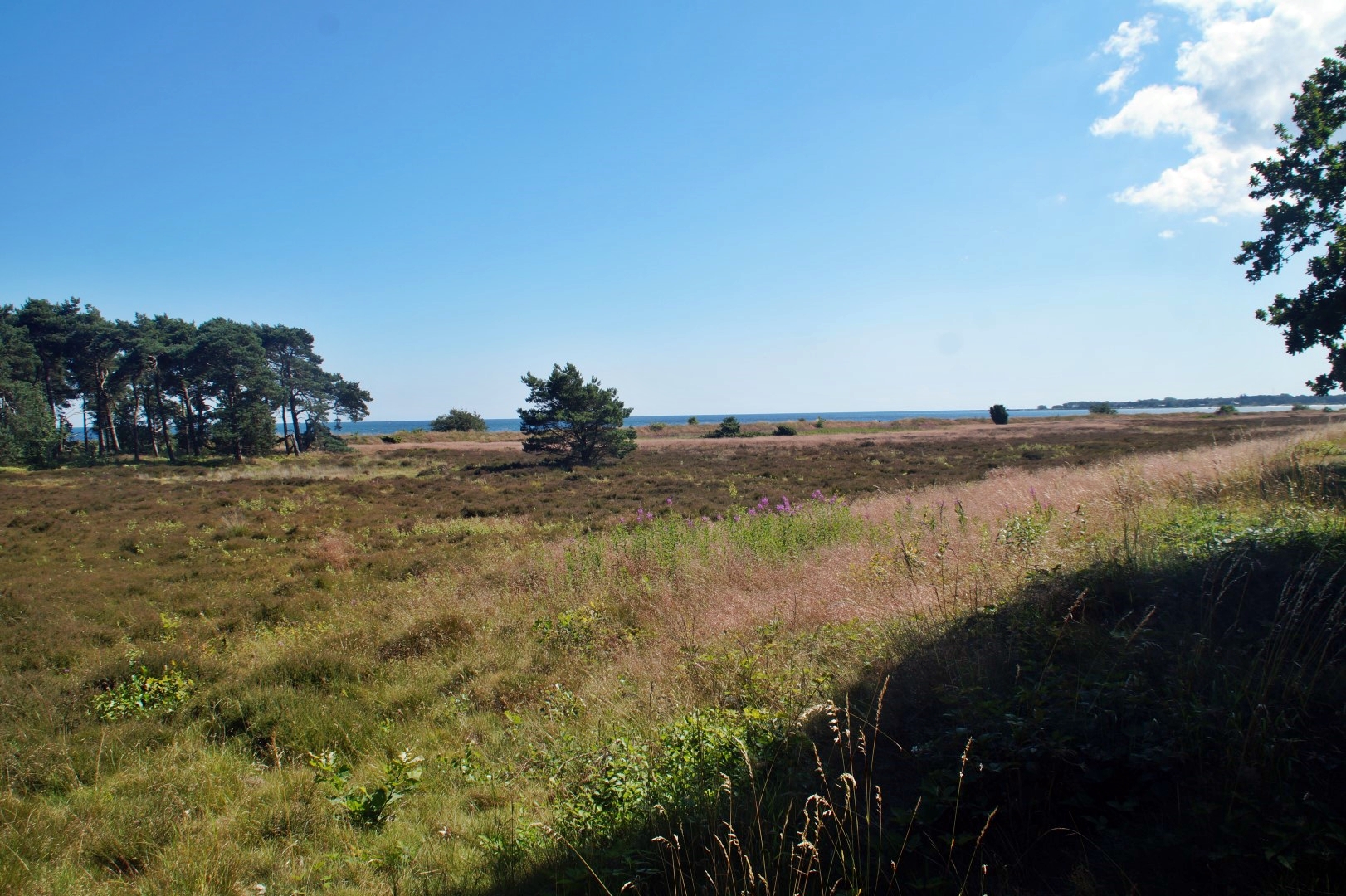
18. Svaneke
Svaneke is the easternmost town on Bornholm and has a population of 1,100 people. With its narrow cobbled streets and quaint half-timbered houses, Svaneke is a popular tourist destination, although it hasn’t become quite as overrun as Gudhjem.
The old village is home to many cute boutiques, a 16th century church, colourful village houses and a lighthouse from 1919, located by the rocky shoreline. Svaneke is my favourite village on Bornholm because of its cozy and inviting atmosphere.
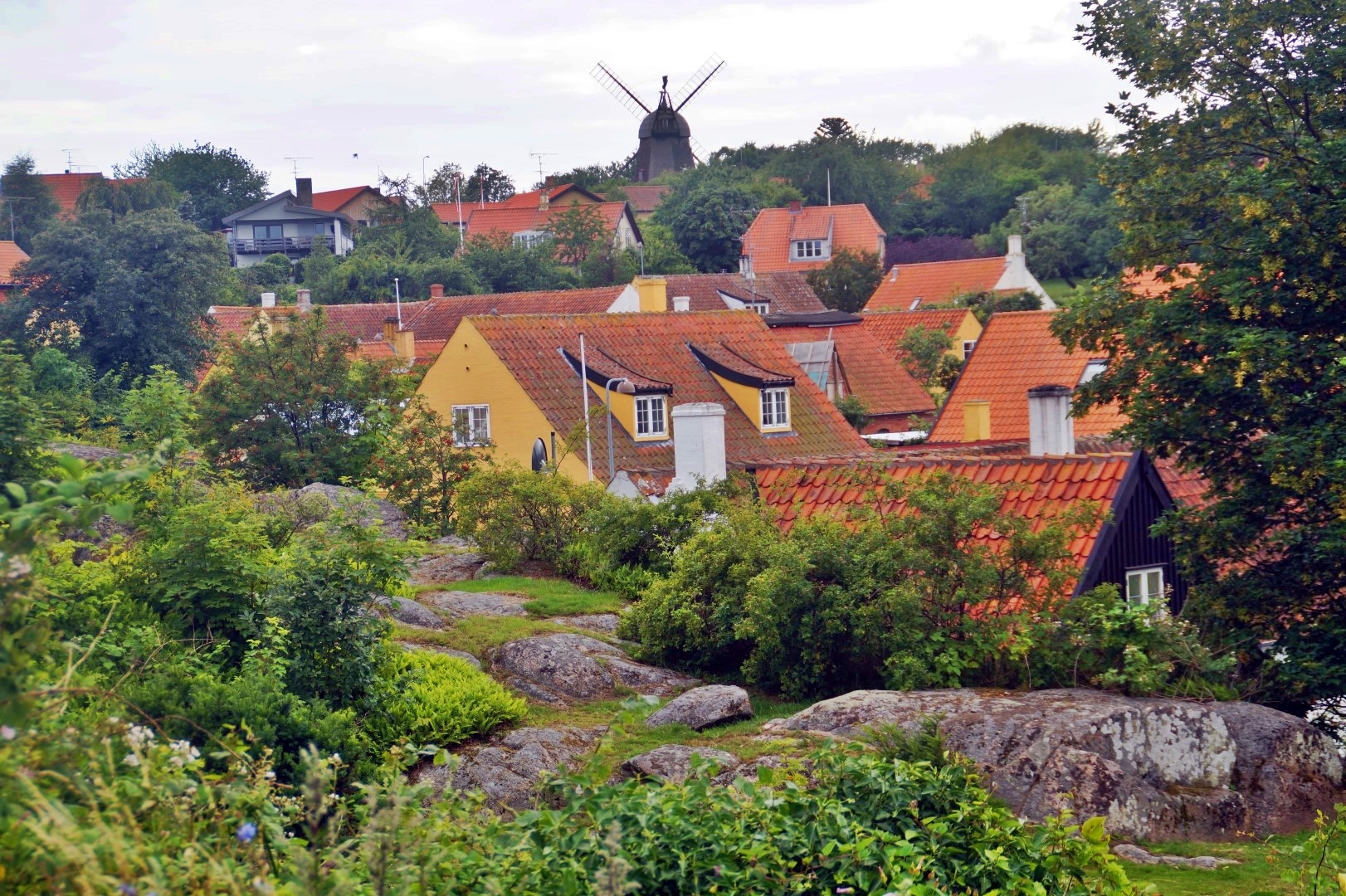
Travel info on Bornholm
Getting there by bus + ferry
Getting to Bornholm from the mainland is quite easy, and the easiest way is to take a bus from Copenhagen. Route 866 departs all year from the central train station in Copenhagen, ending the trip at the ferry terminal in Ystad, Sweden. It’s possible to buy a combination ticket for both the bus and ferry. Route 700 takes you from Copenhagen and onboard the ferry to your end station on Bornholm (all inclusive!).
Getting there by car + ferry
You can take the Bornholmslinjen ferry from Ystad (Sweden), Køge (Denmark) or Sassnitz (Germany) with your car.
Getting there by plane
You can either fly directly from Copenhagen or Billund to Rønne.
Getting around
Renting a car is your best option for seeing everything on a short trip, but if you have a week or more, renting a bike is very recommended. You can also choose to walk/hitchhike, or catch the busses which run quite frequently. See the bus timetable here.
Where to stay
There are many nice guesthouses, hotels, hostels, B&B’s etc. on Bornholm, but if you’re going during the summer, it’s best to book early.
Camping on the island is possible almost anywhere – but only on actual campsites, as you can’t camp whereever you want in Denmark. See the campsites here.
Enjoy beautiful Bornholm!

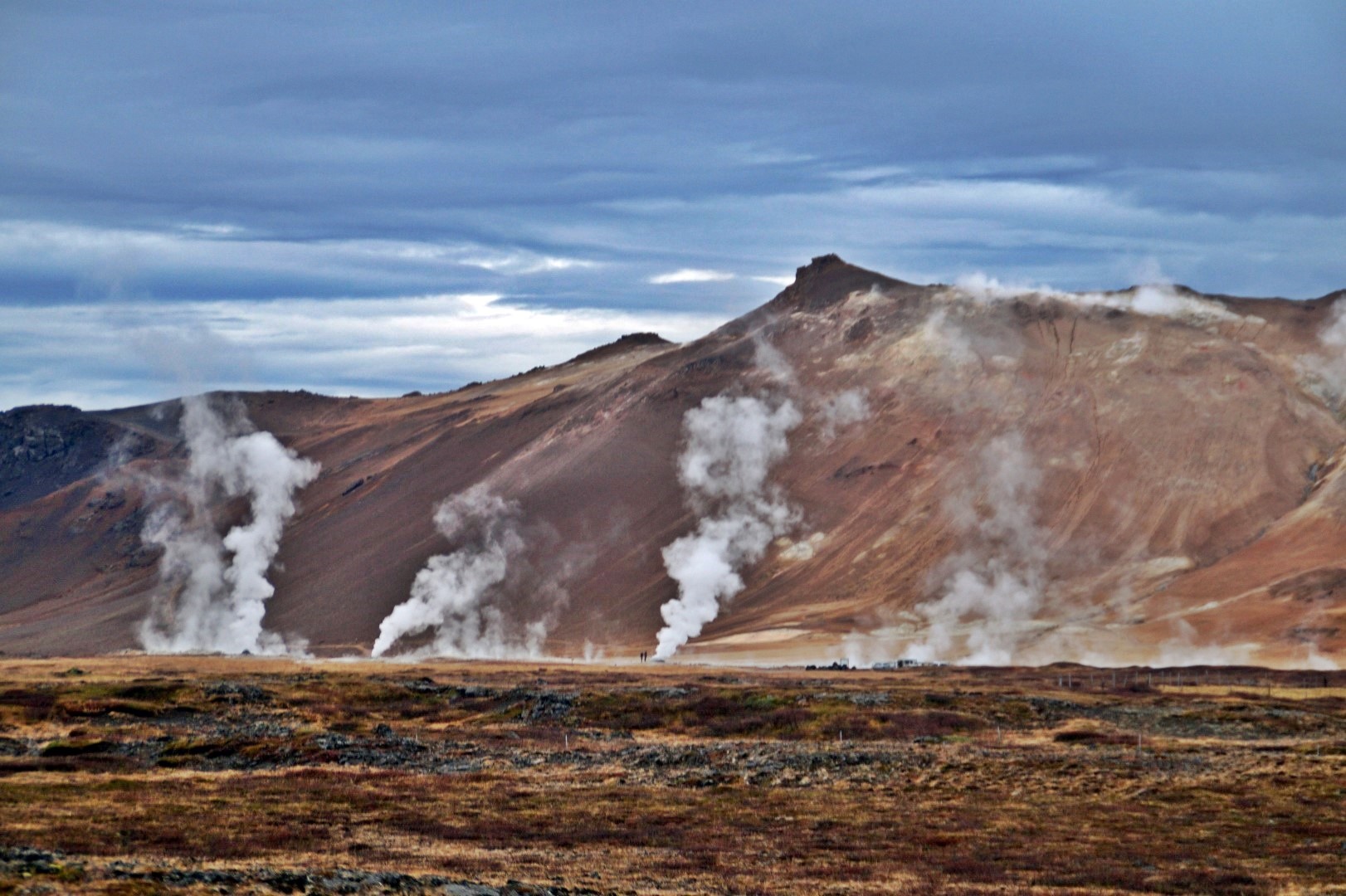
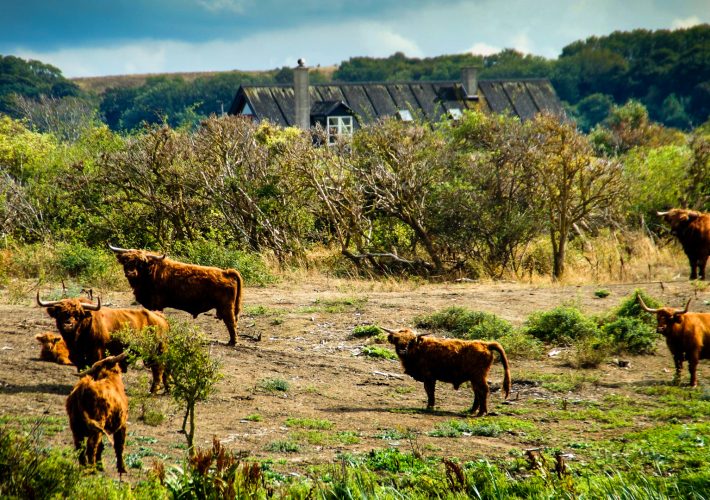
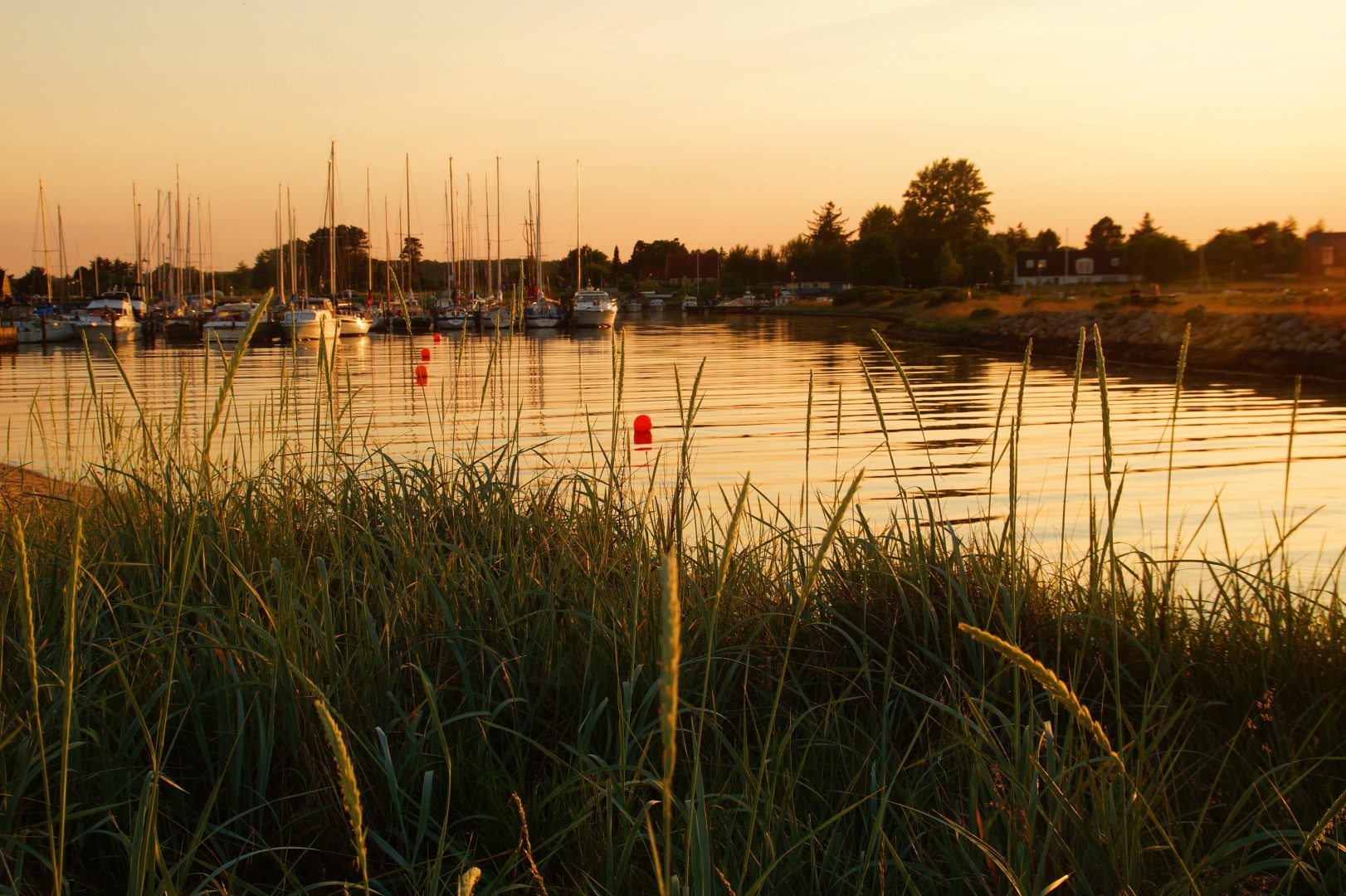

5 COMMENTS
Andreas Petersen
3 years agoBornholm weather
As I’ve mentioned earlier, the sun shines a lot on Bornholm. Weather tends to be warmer, and the island gets more hours of sun. The best time to go to Bornholm is from June to mid-September with attractions, tourist offices, transport and cultural events operating at full steam. Needless to say, you should book hotel in advance during summer, especially in the most crowded month, July.
Vh Andreas 🙂
Mette
3 years agoGreat blog. I love Bornholm and Bornholm’s nature. If you like I recommend shelters and primitive tent place. Views are much better than on campings 🙂 https://visitbornholm.com/en/guide/informations/where-to-stay/campsites-and-shelters
Melissa Cherry Villumsen
3 years agoThank you! I prefer them too, actually! 😀
Ann
5 years agoCan be good to visit this place! Wonderful post, Mel!
Melissa Cherry
5 years agoThanks Ann! It’s one of my favourite places in Denmark! You’d love it too ?